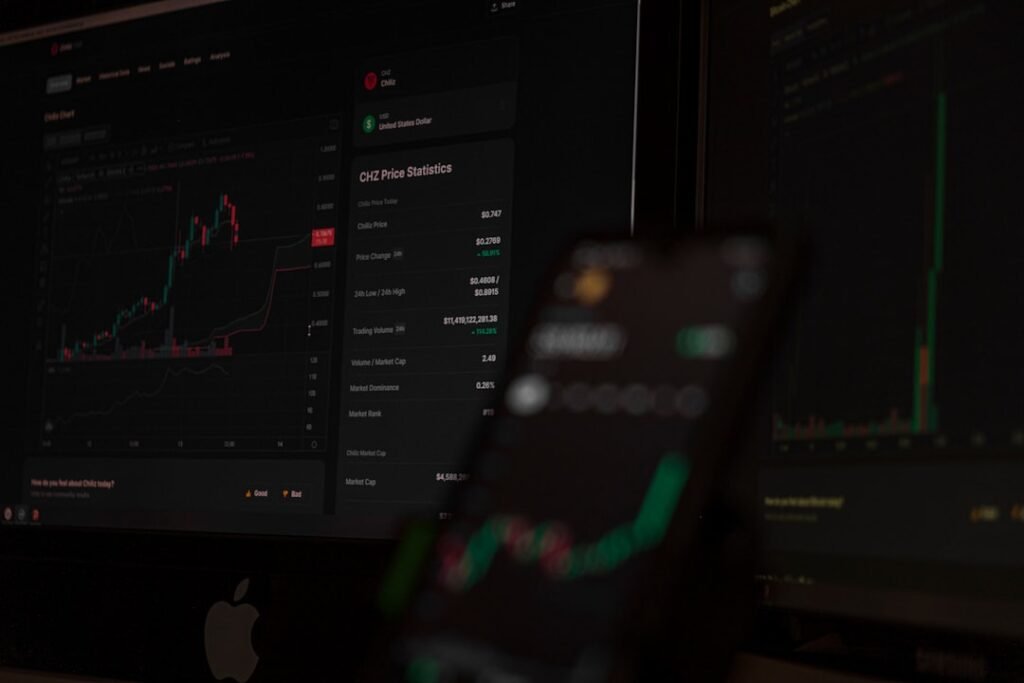暗号通貨のスポット取引:初心者のための初回購入ガイド
暗号通貨市場は年中無休で運営されており、ボラティリティと急激な価格変動にさらされている。この予測不可能性に怯える人もいれば、チャンスと考える人もいる。暗号通貨投資の初心者なら、 スポット取引 は最もシンプルなエントリー・ポイントを提供する。複雑なデリバティブや高頻度戦略とは異なり、スポット取引は資産を直接所有することに重点を置いている。その仕組みと始め方を説明しよう。
暗号スポット取引とは?
スポット取引では、暗号通貨を現在の市場価格で購入し(「その場で」)、後で価値が(うまくいけば)上昇したときに売却します。不換紙幣(米ドルやユーロなど)または別の暗号通貨を、ビットコインやイーサリアムのような資産の即時所有権と交換する。取引はKuCoinやBitgetのような取引所で行われます:
- バイヤー 入札 "注文(彼らが支払う最高価格)を置く。
- セラーズ アスク」注文(最低価格)を出す。
ビッドとアスクが揃えば、即座に取引が成立する。
主要用語
- ビッド・アスク・スプレッド:買値と売値の差。スプレッドが狭いほど流動性が高いことを示す。
- オーダーブック:すべてのアクティブなビッドとアスクのリアルタイム台帳。
- 市場の深さ:異なる価格水準での買い/売り注文の量。
- 取引執行:注文が完了するまでのプロセス。
はじめに4つの簡単なステップ
ステップ1: 取引所の選択と登録
これらの要素に優先順位をつける:
- 地理的利用可能性:プラットフォームがお住まいの地域で動作することを確認してください。
- 料金:取引、入金、出金コストを比較。
- 流動性:取引量の多い取引所(例:Binance、Coinbase)を選ぶとスムーズな取引ができます。
- ユーザー・エクスペリエンス:直感的なインターフェースを選ぶ
メールアドレスを登録した後 KYC認証 身分証明書を提出する。
ステップ 2: アカウントの保護
これらの手順を決して省略しないこと:
- を作成する。 強固でユニークなパスワード.
- 有効にする 二要素認証 (2FA).
- リカバリーのフレーズをオフラインで保存
- 購入後、資産をプライベートウォレットに移すことを検討してください。
ステップ3:資金の入金
銀行口座、クレジットカード、デビットカードをリンクします。取引所のウォレットに不換紙幣を送金します。資金が決済されたら、取引準備完了です。
ステップ4:最初の注文
取引ペア(例:BTC/USD)を選択します。の間で選択します:
- マーケットオーダー:最高の価格ですぐに購入/販売。
- 指値注文:自動的に執行する目標価格を設定します。
スポット取引の長所と短所
メリット
- シンプルさ:初心者に最適。複雑な契約やレバレッジはありません。
- 直接所有:あなたは資産を管理し、いつ売るかを決める。
- より低いリスク:最大損失額=初期投資額強制清算はありません。
- クイック・チャンス:短期的なボラティリティを利用する。
リスク
- ボラティリティ:価格変動が激しく、利益がすぐに損失になる。
- 低い流動性:無名のトークンの場合、適正価格で買い手を見つけるのは難しい。
- セキュリティ責任:ハッキングから資産を守らなければならない。
成功のためのデータ主導の7つのヒント
- 研究資産:購入前にホワイトペーパー、使用例、市場動向を分析する。
- 信頼できる取引所を利用する:流動性が高く、セキュリティ監査が実施されているプラットフォームを優先する。
- オーバーコミットしない:損してもいい分だけを投資する。
- 多様化:複数の資産に分散投資(例:ビットコイン+イーサリアム+ステーブルコイン)。
- 小さく始める:取引ごとに資本の一部を割り当てる。
- マーケット・ニュースの追跡:規制の変化や技術の更新は即座に価格に影響を与える。
- 取引を見直す:勝ちからも負けからも学ぶ。
データが重要な理由
値動きの推測は損失につながる。成功するトレーダーは、次のようなことを心がけている:
- 過去のトレンド(例:ビットコインのサイクル)。
- リアルタイムの市場の深さと注文の流れ。
こんなツール マーケットデータAPI 350以上の取引所からのデータを集約し、長年にわたる過去の価格設定からの洞察を提供する。
スポット取引と他の戦略との比較
- デリバティブ(先物/オプション):資産を所有せずに値動きに賭ける。レバレッジのためリスクは高い。
- 裁定取引:取引所間の価格差を利用する(例えば、A取引所で安く買い、B取引所で高く売る)。
- スキャルピング:秒単位の取引でミクロの価格変動から利益を得る。ボット/アルゴリズムが必要。
- ステーキング:ブロックチェーンネットワークをサポートするために資産をロックすることで報酬を得る。
始める前の最終チェックリスト
- スポット取引=安く買って高く売る。最も身近な暗号戦略。
- 2FAと強力なパスワードでExchangeアカウントを保護します。
- 流動性の高い取引所の主要暗号通貨から始める。
- 誇大広告や直感ではなく、データに基づいて意思決定を行う。
- 必要不可欠な資金を危険にさらしてはならない。
スポット取引は、あなたの暗号の旅を直接コントロールすることができます。これらの基本をマスターすることで、一度に1つの意図的な取引を行い、よりスマートな投資の基礎を築くことができます。












